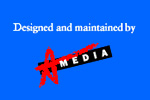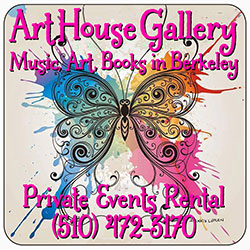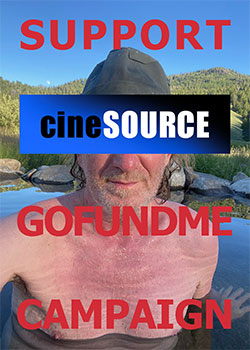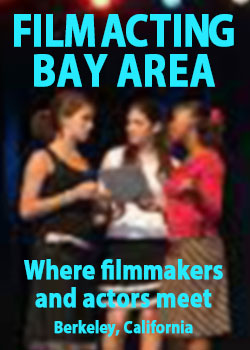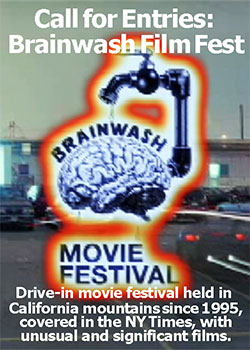Dolby Pixar Develop New Theater Sound
by Doniphan Blair
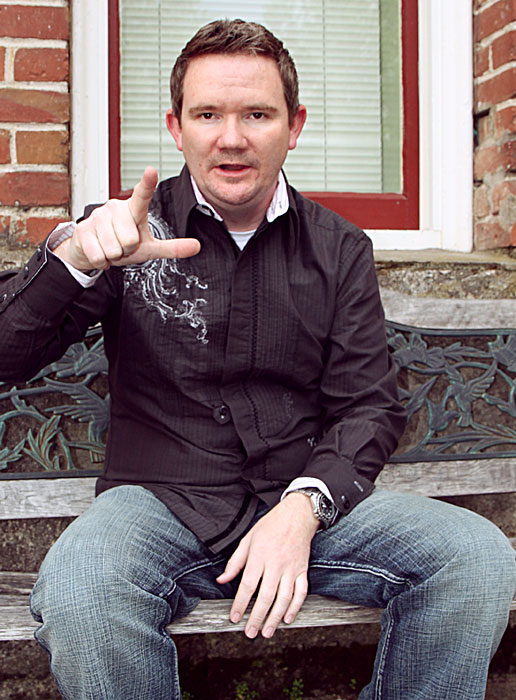 Stuart Bowling of Dolby Laboratories explains the “L” configuration of Surround Sound, as well as numerous other things aural, digital, theatrical, and compression related. Photo: CineSource A lot of people are asking: Now that film seems to be going 3D, where is sound going? There hasn't been much advancement on the audio front since Walter Murch developed today's theatrical standard, 5.1 sound, in 1978 (see article p1). Murch does cite one fertile possibility, binaural sound, although he admits technical difficulties.
Stuart Bowling of Dolby Laboratories explains the “L” configuration of Surround Sound, as well as numerous other things aural, digital, theatrical, and compression related. Photo: CineSource A lot of people are asking: Now that film seems to be going 3D, where is sound going? There hasn't been much advancement on the audio front since Walter Murch developed today's theatrical standard, 5.1 sound, in 1978 (see article p1). Murch does cite one fertile possibility, binaural sound, although he admits technical difficulties.
Recently opening offices from Los Angeles to London, Penteo Surround claims they have the new industry standard for 5.1 surround and demoed units at NAB 2010, while there are others working furiously elsewhere. But, considering 5.1 was developed in the Bay Area, the precedent for innovation is ours to loose. No surprise, two local giants, Dolby and Pixar, have taken up the challenge.
After little news from Dolby in a while, we were pleasantly surprised when their publicist invited CineSource to the Sonoma International Film Festival, of which they were part sponsors. Evidently, something was afoot. Indeed, Stuart Bowling, their worldwide technical marketing manager, would be there for a panel discussion and available for an interview afterwards.
Friendly, chatty and quite English (indeed, this reporter couldn't quite catch his very English pronunciation of "la-bor-a-tory," as in Dolby Laboratories), Bowling began in the business working for Warner Brothers Europe, overseeing the construction of theatrical facilities. While developing a theme park in Germany, he met folks from Lucas Films and relocated here to work for their THX division, primarily with Dobly technicians, as it turned out. After five years, Bowling was lured away in 2006 to Dolby itself.
Alas, the Sonoma festival panel didn't even begin to allocate Bowling the time to tell some of his amazing secrets, statistics and observations. But CineSource was able to interview him at length, behind the building, in a lovely sunny Sonoma backyard. We started by asking him how the Pixar and Dolby love affair got going.
Stuart Bowling: Pixar Animation had come to Dolby and said, 'We have 5.1 sound; we have digital imaging; we now have 3D. But we kind of feel our audio is somewhat behind. How can we enable something truly different to create a more immersive and enveloping experience for our viewers?'
We had a lot of discussions back and forth. We worked with Paul Cichocki, the postproduction supervisor Pixar, and then with the guys at Skywalker Ranch, on different 'ideologies' and things we could test. We wanted to introduce something compelling.
The exhibition industry is changing. We are currently going through an evolution of film to digital like we've never seen. Obviously, 3D has propelled that - the adoption rate is stratospheric. [Digital projection is only 15% of theaters worldwide, indicating immense growth opportunity]. Whatever we do, introducing technology can not be disruptive. We don't want to do anything to slow down exhibition.
If you look at 5.1 sound today, we kind of have our left and right, behind the screen, and low frequency - this 'L' configuration: left surround and right surround. We asked ourselves: how can we add more definition? Nine or ten years ago, we introduced Dolby Surround EX for film. We had reached the limitations of 5.1 digital sound, technically six tracks, which is condensed between the sprockets [and the image] on the film. In that data block, there are six channels of audio! We were able to do an encoding in the surrounds, bury information and create a mono surround. That was Surround EX. It helps widen the sweet spot [the area experiencing the full effect].
With Digital Cinema, we don't have any restrictions. The digital cinema specs actually specify sixteen channels of audio. When we set up a Surround EX Theatre, we are actually breaking out back left and back right, from a wiring point of view, but then we're summing [English for 'adding'] them back together.
Dolby Surround 7.1 made perfect sense. We said, 'What if we made it all discrete, so that we now have left wall, right wall and back left, back right?' That fits all 5.1-enabled theatres, which makes it easier to integrate. At best, an exhibitor will have to purchase another amplifier, to break out the back surrounds - average cost about $700. They will also typically need a firmware update in their cinema processor.
We went back to Pixar and said, 'Have you thought about 7.1?' They had thought about six channels, 6.1, but hadn't really considered 7.1. 7.1 exists in the consumer world, but only on Blue Ray. But, in Blue Ray, that information was designed for 5.1. Pixar found this ideology really interesting. They went back to Skywalker, did some tests and were pretty amazed. By breaking up the surrounds, we widen the sweet spot. We also allow truly unique panning.
As a sound designer, I can truly hit the sidewall only. I can also use this for panning effects and creating sound behind the audience. With 3D's visuals, we can do something really interesting - we can make sounds seemingly pop off the screen.
When will this be in a theater near us?
'Toy Story 3' is scheduled for release in North America on June 18. We are enabling that in as many theaters as possible. We are creating an update to one of our cinema processors, CP 650, that will go out next week. Another, purely designed for Digital Cinema, the CP 750, will go out in the beginning of May.
We worked with Pixar to create test content. We wanted to get exhibition excited about what was going to be happening with 7.1. With Paul Cichocki, we took elements from 'Toy Story 2,' 'Finding Emo' and 'UP,' and we remixed those in 7.1 and created a demonstration reel. We took that to ShoWest [the industry trade show, March 15-18 in Las Vegas]. Everyone was blown away - we were very excited!
Dolby is uniquely positioned in that we enable content creators: our primary goal is to insure what they want on the screen is best replicated. We can now carry this through the entire system and down to the consumer level as well.
Do you know a theater in the Bay Area where we can look for that?
Right now it's early. We don't have specifics from exhibitions as yet. They are waiting for us to provide a firmware package with the necessary documentation. This will be introduced for 3D visuals and 'Toy Story 3.' We are actively talking to others studios to embrace the [7.1] format in 2D as well.
Any breakthroughs on the compression front?
There are some ideas and concepts that we are looking forward to disclosing later in the year.
There is a bizarre conflict between high and low rez. The higher rez we go, the lower rez people want. YouTube is the biggest thing in television, a lot of people listen to MP3.
You bring up a very good point. If you look at technology, it is cyclical. The consumer certainly has steered technology, as opposed to technology steering the consumer. The advent of iPod meant that now everyone could carry their music collection with them - it's all about convenience.
Interestingly, while we have seen compact disk fall down, there is a huge resurgence in vinyl and the purity of audio. The consumer has gone, 'I kind of want to hear something different now.' I think we can go back to lostless audio. Apple has the ability for you to download an MP3 version or pay a slightly higher premium for the lost-less version.
I just interviewed Walter Murch and he mentioned binaural sound.
It's a very interesting concept, because you can create some interesting phase shifts with audio. We can place audio behind you. When you are wearing headphones, you can experience something really incredible. But if you are in a movie theatre, you are dealing with a much larger environment.
We are actively engaged with the content creation community. We recently submitted out ['sent out' in American] a survey saying, 'Do you see a need to go beyond 5.1? How can we help you create a vision that you are looking for?' There are definitely some exciting opportunities to come.
Has anyone mentioned the idea of putting headphones in theaters?
IMAX came out in 1995 with 'Wings of Courage,' their first 3D release. Those original IMAX headsets was almost like wearing a crash helmet. They used to carry an auxiliary audio channel. There are some interesting technologies available, typically used in live events, where the performer can wear something over their ear. It becomes more difficult in exhibition [industry term for theaters]. We are having to deal with the whole thing that is in your ear: there is the cleanliness issue, how do I get it back, is it attached to something?
Is Dolby making advancements with MP3, or lower rez formats?
As we look forward, we see trends. Now 7.1 is being initiated and we are being asked for 7.1 beyond cinema. We are also looking at digital distribution. We worked with Netflix recently to provide them encoding technology. They can use Dobly codecs for their streaming service. As bandwidth increases, and the ability to move larger files, compression can play varying roles in that.
You gave a great figure before: distribution is still 85% film and only 15% digital. That's not that much.
If we go back and look at Digital Cinema - it started in 1999. JVC first entered the market with DILA display technology for cinemas but then Texas Instruments became the standard with DLP display technology. At that time, Texas Instruments could only reproduce a 1.3 K image, 720 [pixels wide]. That became 2K, the principal format in exhibition today, which is 2048 [pixels] by 1080. The driving force behind the technology is for distribution and quality. With film, it is susceptible to environmental changes, to being scratched, to getting dirty.
As we know, when any technology comes in, it is expensive. Then as the technology proliferates, the price can come down. Digital projection is somewhat more expensive than a film projector. Digital Cinema kind of struggled in the beginning. It wasn't gaining much momentum. It was hard for exhibition to invest in the technology. Along came 3D.
3D meant that they were able to add a premium, because it was a unique experience, and share that premium between the studio and the exhibitor. The studio, because it is costing them more to make 3D; the exhibitor, because they are investing in the technology [although theaters can get up to ten times the attendance with 3D].
With movies like 'Avatar,' we have seen a phenomenal amount of growth in 3D. This year financing came through. We are seeing a lot of stability in the economy. Credit is finally beginning to open up. DCIP, the financing entity for Regal, AMC and Cinemark, has a new funding entity called KASIMA.That means over 15,000 screens in North America, over the next three years, would transition into digital. That will be phenomenal growth, when you consider that the North America market is like 38,000 screens. We are now seeing a lot of independents willing to invest in this technology. The beauty of the technology is, you can play alternative content. We are now seeing concerts, operas, live sporting events, live 3D events and more - all coming into the exhibition space.
Before it was kind of locked because we were dealing with film. Digital distribution means that we can now condense our file size. We are dealing with replenishable data storage, a vast improvement over film. For exhibition, it is an exciting time.
Do they send these films through the Internet or do they still send hard drives?
Primarily, it is still hard drives. Companies like Deluxe, Microspace, have been doing experimentation with satellite delivery. Dolby has partnered with Arqiva in Europe to distribute content to cinemas that we package. Deluxe has been actively testing satellite delivery and Microspace already provides it. We have our own technology which enables a cinema package that can play on any digital cinema all over the world. We have a very good codecs, JPEG 2000, which is universal, used by studios. You can actually compress that image without causing any degradation.
Consider when a movie starts, it arrives as TIFs, typically around three to four terabytes. The average distribution [version] ends up being around 280 GBs. You can even drop it down as low as 50 GB and still see no degradation in the image. Having this technology, having our encoder, SCC2000, we are able to create our own packaging and make it available to our distribution partner Arqiva. They are able to send that out over the satellite.
Seems there are three levels of 3D projection technology. Some appear a little dark, no?
3D by definition has always had an issue with regards to light. The specified level of light for 3D is 4.5 foot-lamberts [a unit of light measurement]. It sounds terribly low,. but the [movie] is re-color-timed so it doesn't look less then a 2D presentation. [The darkness] is due to the inherent nature of 3D: we are going through filtration, the projectors have to modulate, and all that ends up taking away light.
From what I heard, there is a new projection systems that pumps more light.
We are certainly seeing brighter machines coming out which can increase the light level for 3D.
The similar thing in sound is the tendency to pump up the volume?
There are lot of dynamic ranges available in the digital cinema. It's fully uncompressed audio. It really comes down to personal taste. Exhibitors have to deal with an average across a three to four-hundred seat auditorium.
There are inherent issues with turning down the volume: you actually change the aesthetics of the mix. If we look at sound pressures in a room, by calibrations, our screen levels are set at 85 DB, our surrounds at 82. When we turn the faders down, at a certain point, and you are going to mask the surrounds. They are going to be lost in the ambiance noise in the room.
There's some interesting technology we have available, part of our Dolby Volume Suite, which can help cinemas with the dynamics of sound. If a theatre turns the volume down the mix can get lost in the background noise. A solution is we bring the overall dynamics back without increasing the overall levels. That goes back to our fundamentals [at Dolby Laboratories]. We want the audience to see and hear what the director intended.
Who has the best cinemas?
Exhibition is going through an amazing time right now. In the beginning, it was all about the single giant screen and trying to get as many people in as possible. Then we went to twins, triplexes, fourplexes. Then came the muscle machines, in the mid 90s: the multiplex, these giant factories, where we could get all these people in. The consumer now has become more savvy. They are now seeking different ways to experience entertainment. If you look at the age group typical to the cinema, it is in the 18 to mid-20s range. They don't want to be at home, sitting there with their parents, even if they have a plasma or 3D in home. They want to be out.
We now see a change in exhibition to cater to that market. We have Sundance in San Francisco with Kabuki. They have turned that theatre into an entertainment destination: very trendy, very visceral, a cool place to go and hang out, meet friends and watch a movie.
We are now seeing trends across all the majors. They are going back into their existing complexes, gutting their large auditoriums, putting in wall-to-wall and floor-to-ceiling screens, much comfier seats. Trying to provide you a truly compelling experience you can't get in the home.
Anyone leading this endeavor, like in Germany?
North America is doing a lot. The three major exhibitors, AMC, Regal, and Cinemark all have their own branding: Cinemark is XD, AMC is Enhanced Theater Experience and Marcus, they have the 'Ultra-Screen.' AMC is an example. They are doing this interesting food service: you pay a flat fee of twenty dollars, but within that you get 'x' amount towards food and they bring it out to your table -
Tables in a theater?
Yes. Take Cinetopia, up in Portland: they widened the rows, they have a bar and restaurant and all these things to accommodate the tastes of consumers because we are changing in our demands. Customer service is what we want and we want more for our money.
So the demise of the theater is over-reported?
Definitely! Look at the box office for last year: we surpassed ten billion! We saw an erosion [of theatrical revenue] when VHS came out. Then DVD came out and the DVD market reached a point where it was out grossing exhibition. Now it has turned around: obviously 3D and the extras drive the box office. Exhibition is all about entertainment and giving the audience something unique you can't get anywhere else.
Us old guys used to use the word church - cinema church - the black room, where your mind is taken somewhere totally different. It is still in the running?
Yeah. As a consumer, we are demanding to watch content and we are willing to watch it on a Blackberry or an iPhone - now the iPad. Entertainment is entertainment, and you should have access wherever you go. Still, you don't get that experience you get in a cinema. You get that big screen. You go in there and you watch this thing together. We are human and we are social beings. We want to experience that as a community.
And your summary about the current Dolby situation?
We are primarily an audio company. We are 40 years in the cinema industry - this being our fortieth - and introducing a new sound format, Dobly Surround 7.1. Like I said, the future is great. We have a lot of ideas and concepts that we want to work thru. We will continue push boundaries, bring innovation and provide new innovative ways to entertain the audience. Posted on May 11, 2010 - 07:02 AM
by Doniphan Blair
 Stuart Bowling of Dolby Laboratories explains the “L” configuration of Surround Sound, as well as numerous other things aural, digital, theatrical, and compression related. Photo: CineSource
Stuart Bowling of Dolby Laboratories explains the “L” configuration of Surround Sound, as well as numerous other things aural, digital, theatrical, and compression related. Photo: CineSource Recently opening offices from Los Angeles to London, Penteo Surround claims they have the new industry standard for 5.1 surround and demoed units at NAB 2010, while there are others working furiously elsewhere. But, considering 5.1 was developed in the Bay Area, the precedent for innovation is ours to loose. No surprise, two local giants, Dolby and Pixar, have taken up the challenge.
After little news from Dolby in a while, we were pleasantly surprised when their publicist invited CineSource to the Sonoma International Film Festival, of which they were part sponsors. Evidently, something was afoot. Indeed, Stuart Bowling, their worldwide technical marketing manager, would be there for a panel discussion and available for an interview afterwards.
Friendly, chatty and quite English (indeed, this reporter couldn't quite catch his very English pronunciation of "la-bor-a-tory," as in Dolby Laboratories), Bowling began in the business working for Warner Brothers Europe, overseeing the construction of theatrical facilities. While developing a theme park in Germany, he met folks from Lucas Films and relocated here to work for their THX division, primarily with Dobly technicians, as it turned out. After five years, Bowling was lured away in 2006 to Dolby itself.
Alas, the Sonoma festival panel didn't even begin to allocate Bowling the time to tell some of his amazing secrets, statistics and observations. But CineSource was able to interview him at length, behind the building, in a lovely sunny Sonoma backyard. We started by asking him how the Pixar and Dolby love affair got going.
Stuart Bowling: Pixar Animation had come to Dolby and said, 'We have 5.1 sound; we have digital imaging; we now have 3D. But we kind of feel our audio is somewhat behind. How can we enable something truly different to create a more immersive and enveloping experience for our viewers?'
We had a lot of discussions back and forth. We worked with Paul Cichocki, the postproduction supervisor Pixar, and then with the guys at Skywalker Ranch, on different 'ideologies' and things we could test. We wanted to introduce something compelling.
The exhibition industry is changing. We are currently going through an evolution of film to digital like we've never seen. Obviously, 3D has propelled that - the adoption rate is stratospheric. [Digital projection is only 15% of theaters worldwide, indicating immense growth opportunity]. Whatever we do, introducing technology can not be disruptive. We don't want to do anything to slow down exhibition.
If you look at 5.1 sound today, we kind of have our left and right, behind the screen, and low frequency - this 'L' configuration: left surround and right surround. We asked ourselves: how can we add more definition? Nine or ten years ago, we introduced Dolby Surround EX for film. We had reached the limitations of 5.1 digital sound, technically six tracks, which is condensed between the sprockets [and the image] on the film. In that data block, there are six channels of audio! We were able to do an encoding in the surrounds, bury information and create a mono surround. That was Surround EX. It helps widen the sweet spot [the area experiencing the full effect].
With Digital Cinema, we don't have any restrictions. The digital cinema specs actually specify sixteen channels of audio. When we set up a Surround EX Theatre, we are actually breaking out back left and back right, from a wiring point of view, but then we're summing [English for 'adding'] them back together.
Dolby Surround 7.1 made perfect sense. We said, 'What if we made it all discrete, so that we now have left wall, right wall and back left, back right?' That fits all 5.1-enabled theatres, which makes it easier to integrate. At best, an exhibitor will have to purchase another amplifier, to break out the back surrounds - average cost about $700. They will also typically need a firmware update in their cinema processor.
We went back to Pixar and said, 'Have you thought about 7.1?' They had thought about six channels, 6.1, but hadn't really considered 7.1. 7.1 exists in the consumer world, but only on Blue Ray. But, in Blue Ray, that information was designed for 5.1. Pixar found this ideology really interesting. They went back to Skywalker, did some tests and were pretty amazed. By breaking up the surrounds, we widen the sweet spot. We also allow truly unique panning.
As a sound designer, I can truly hit the sidewall only. I can also use this for panning effects and creating sound behind the audience. With 3D's visuals, we can do something really interesting - we can make sounds seemingly pop off the screen.
When will this be in a theater near us?
'Toy Story 3' is scheduled for release in North America on June 18. We are enabling that in as many theaters as possible. We are creating an update to one of our cinema processors, CP 650, that will go out next week. Another, purely designed for Digital Cinema, the CP 750, will go out in the beginning of May.
We worked with Pixar to create test content. We wanted to get exhibition excited about what was going to be happening with 7.1. With Paul Cichocki, we took elements from 'Toy Story 2,' 'Finding Emo' and 'UP,' and we remixed those in 7.1 and created a demonstration reel. We took that to ShoWest [the industry trade show, March 15-18 in Las Vegas]. Everyone was blown away - we were very excited!
Dolby is uniquely positioned in that we enable content creators: our primary goal is to insure what they want on the screen is best replicated. We can now carry this through the entire system and down to the consumer level as well.
Do you know a theater in the Bay Area where we can look for that?
Right now it's early. We don't have specifics from exhibitions as yet. They are waiting for us to provide a firmware package with the necessary documentation. This will be introduced for 3D visuals and 'Toy Story 3.' We are actively talking to others studios to embrace the [7.1] format in 2D as well.
Any breakthroughs on the compression front?
There are some ideas and concepts that we are looking forward to disclosing later in the year.
There is a bizarre conflict between high and low rez. The higher rez we go, the lower rez people want. YouTube is the biggest thing in television, a lot of people listen to MP3.
You bring up a very good point. If you look at technology, it is cyclical. The consumer certainly has steered technology, as opposed to technology steering the consumer. The advent of iPod meant that now everyone could carry their music collection with them - it's all about convenience.
Interestingly, while we have seen compact disk fall down, there is a huge resurgence in vinyl and the purity of audio. The consumer has gone, 'I kind of want to hear something different now.' I think we can go back to lostless audio. Apple has the ability for you to download an MP3 version or pay a slightly higher premium for the lost-less version.
I just interviewed Walter Murch and he mentioned binaural sound.
It's a very interesting concept, because you can create some interesting phase shifts with audio. We can place audio behind you. When you are wearing headphones, you can experience something really incredible. But if you are in a movie theatre, you are dealing with a much larger environment.
We are actively engaged with the content creation community. We recently submitted out ['sent out' in American] a survey saying, 'Do you see a need to go beyond 5.1? How can we help you create a vision that you are looking for?' There are definitely some exciting opportunities to come.
Has anyone mentioned the idea of putting headphones in theaters?
IMAX came out in 1995 with 'Wings of Courage,' their first 3D release. Those original IMAX headsets was almost like wearing a crash helmet. They used to carry an auxiliary audio channel. There are some interesting technologies available, typically used in live events, where the performer can wear something over their ear. It becomes more difficult in exhibition [industry term for theaters]. We are having to deal with the whole thing that is in your ear: there is the cleanliness issue, how do I get it back, is it attached to something?
Is Dolby making advancements with MP3, or lower rez formats?
As we look forward, we see trends. Now 7.1 is being initiated and we are being asked for 7.1 beyond cinema. We are also looking at digital distribution. We worked with Netflix recently to provide them encoding technology. They can use Dobly codecs for their streaming service. As bandwidth increases, and the ability to move larger files, compression can play varying roles in that.
You gave a great figure before: distribution is still 85% film and only 15% digital. That's not that much.
If we go back and look at Digital Cinema - it started in 1999. JVC first entered the market with DILA display technology for cinemas but then Texas Instruments became the standard with DLP display technology. At that time, Texas Instruments could only reproduce a 1.3 K image, 720 [pixels wide]. That became 2K, the principal format in exhibition today, which is 2048 [pixels] by 1080. The driving force behind the technology is for distribution and quality. With film, it is susceptible to environmental changes, to being scratched, to getting dirty.
As we know, when any technology comes in, it is expensive. Then as the technology proliferates, the price can come down. Digital projection is somewhat more expensive than a film projector. Digital Cinema kind of struggled in the beginning. It wasn't gaining much momentum. It was hard for exhibition to invest in the technology. Along came 3D.
3D meant that they were able to add a premium, because it was a unique experience, and share that premium between the studio and the exhibitor. The studio, because it is costing them more to make 3D; the exhibitor, because they are investing in the technology [although theaters can get up to ten times the attendance with 3D].
With movies like 'Avatar,' we have seen a phenomenal amount of growth in 3D. This year financing came through. We are seeing a lot of stability in the economy. Credit is finally beginning to open up. DCIP, the financing entity for Regal, AMC and Cinemark, has a new funding entity called KASIMA.That means over 15,000 screens in North America, over the next three years, would transition into digital. That will be phenomenal growth, when you consider that the North America market is like 38,000 screens. We are now seeing a lot of independents willing to invest in this technology. The beauty of the technology is, you can play alternative content. We are now seeing concerts, operas, live sporting events, live 3D events and more - all coming into the exhibition space.
Before it was kind of locked because we were dealing with film. Digital distribution means that we can now condense our file size. We are dealing with replenishable data storage, a vast improvement over film. For exhibition, it is an exciting time.
Do they send these films through the Internet or do they still send hard drives?
Primarily, it is still hard drives. Companies like Deluxe, Microspace, have been doing experimentation with satellite delivery. Dolby has partnered with Arqiva in Europe to distribute content to cinemas that we package. Deluxe has been actively testing satellite delivery and Microspace already provides it. We have our own technology which enables a cinema package that can play on any digital cinema all over the world. We have a very good codecs, JPEG 2000, which is universal, used by studios. You can actually compress that image without causing any degradation.
Consider when a movie starts, it arrives as TIFs, typically around three to four terabytes. The average distribution [version] ends up being around 280 GBs. You can even drop it down as low as 50 GB and still see no degradation in the image. Having this technology, having our encoder, SCC2000, we are able to create our own packaging and make it available to our distribution partner Arqiva. They are able to send that out over the satellite.
Seems there are three levels of 3D projection technology. Some appear a little dark, no?
3D by definition has always had an issue with regards to light. The specified level of light for 3D is 4.5 foot-lamberts [a unit of light measurement]. It sounds terribly low,. but the [movie] is re-color-timed so it doesn't look less then a 2D presentation. [The darkness] is due to the inherent nature of 3D: we are going through filtration, the projectors have to modulate, and all that ends up taking away light.
From what I heard, there is a new projection systems that pumps more light.
We are certainly seeing brighter machines coming out which can increase the light level for 3D.
The similar thing in sound is the tendency to pump up the volume?
There are lot of dynamic ranges available in the digital cinema. It's fully uncompressed audio. It really comes down to personal taste. Exhibitors have to deal with an average across a three to four-hundred seat auditorium.
There are inherent issues with turning down the volume: you actually change the aesthetics of the mix. If we look at sound pressures in a room, by calibrations, our screen levels are set at 85 DB, our surrounds at 82. When we turn the faders down, at a certain point, and you are going to mask the surrounds. They are going to be lost in the ambiance noise in the room.
There's some interesting technology we have available, part of our Dolby Volume Suite, which can help cinemas with the dynamics of sound. If a theatre turns the volume down the mix can get lost in the background noise. A solution is we bring the overall dynamics back without increasing the overall levels. That goes back to our fundamentals [at Dolby Laboratories]. We want the audience to see and hear what the director intended.
Who has the best cinemas?
Exhibition is going through an amazing time right now. In the beginning, it was all about the single giant screen and trying to get as many people in as possible. Then we went to twins, triplexes, fourplexes. Then came the muscle machines, in the mid 90s: the multiplex, these giant factories, where we could get all these people in. The consumer now has become more savvy. They are now seeking different ways to experience entertainment. If you look at the age group typical to the cinema, it is in the 18 to mid-20s range. They don't want to be at home, sitting there with their parents, even if they have a plasma or 3D in home. They want to be out.
We now see a change in exhibition to cater to that market. We have Sundance in San Francisco with Kabuki. They have turned that theatre into an entertainment destination: very trendy, very visceral, a cool place to go and hang out, meet friends and watch a movie.
We are now seeing trends across all the majors. They are going back into their existing complexes, gutting their large auditoriums, putting in wall-to-wall and floor-to-ceiling screens, much comfier seats. Trying to provide you a truly compelling experience you can't get in the home.
Anyone leading this endeavor, like in Germany?
North America is doing a lot. The three major exhibitors, AMC, Regal, and Cinemark all have their own branding: Cinemark is XD, AMC is Enhanced Theater Experience and Marcus, they have the 'Ultra-Screen.' AMC is an example. They are doing this interesting food service: you pay a flat fee of twenty dollars, but within that you get 'x' amount towards food and they bring it out to your table -
Tables in a theater?
Yes. Take Cinetopia, up in Portland: they widened the rows, they have a bar and restaurant and all these things to accommodate the tastes of consumers because we are changing in our demands. Customer service is what we want and we want more for our money.
So the demise of the theater is over-reported?
Definitely! Look at the box office for last year: we surpassed ten billion! We saw an erosion [of theatrical revenue] when VHS came out. Then DVD came out and the DVD market reached a point where it was out grossing exhibition. Now it has turned around: obviously 3D and the extras drive the box office. Exhibition is all about entertainment and giving the audience something unique you can't get anywhere else.
Us old guys used to use the word church - cinema church - the black room, where your mind is taken somewhere totally different. It is still in the running?
Yeah. As a consumer, we are demanding to watch content and we are willing to watch it on a Blackberry or an iPhone - now the iPad. Entertainment is entertainment, and you should have access wherever you go. Still, you don't get that experience you get in a cinema. You get that big screen. You go in there and you watch this thing together. We are human and we are social beings. We want to experience that as a community.
And your summary about the current Dolby situation?
We are primarily an audio company. We are 40 years in the cinema industry - this being our fortieth - and introducing a new sound format, Dobly Surround 7.1. Like I said, the future is great. We have a lot of ideas and concepts that we want to work thru. We will continue push boundaries, bring innovation and provide new innovative ways to entertain the audience. Posted on May 11, 2010 - 07:02 AM













